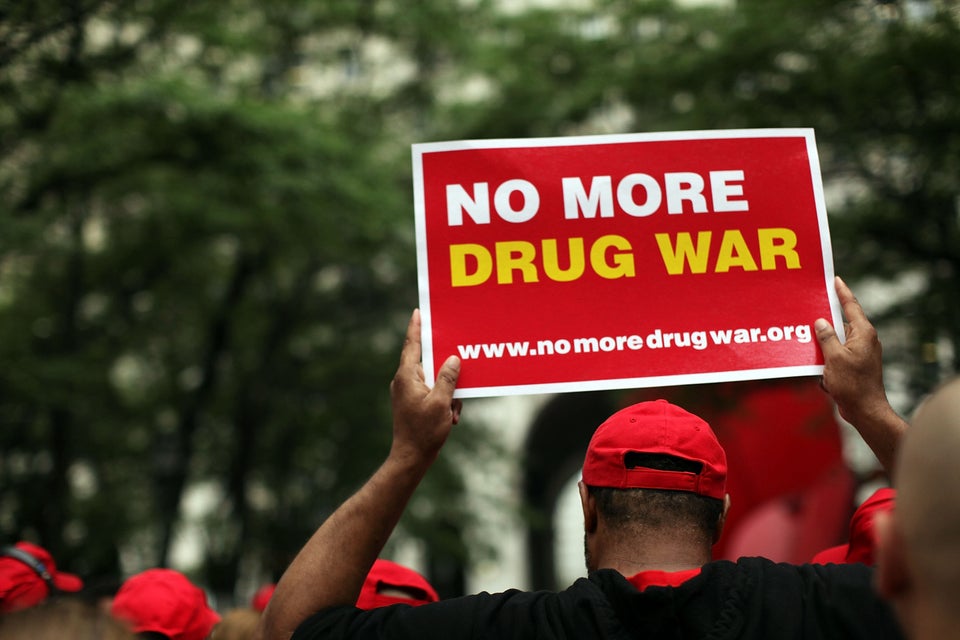
Public health officials are calling the opioid crisis the worst drug epidemic in American history.
Overdoses claimed more than 33,000 lives in 2015, and these numbers are steadily on the rise. It’s estimated that over 2 million people in the U.S. are addicted to prescription opioid pain relievers, with many more using the drugs illegally.
Potential solutions to the rapidly escalating opioid crisis have been few and far between. But a long-demonized class of illegal drugs may provide one unlikely approach to tackling widespread opiate abuse and addiction.
A new study, published last week in the Journal of Psychopharmacology, found that experience with psychedelics was linked with decreased opioid abuse and addiction ― an effect that appears to be unique to hallucinogens and marijuana. Conversely, use of other illegal drugs such as cocaine was associated with an increased risk of opioid abuse and dependence.
The findings underscore the positive psychological effects increasingly known to be associated with psychedelic experiences. Previous findings have linked psychedelic use with reduced psychological distress and a decreased risk of suicide, while a 2011 Johns Hopkins study showed a single trip on psilocybin (aka “magic mushrooms”) resulted in lasting positive personality changes such as increases in openness to experience, a trait associated with creativity and open-mindedness.
An Intriguing Connection
Studies have shown drugs like LSD and psilocybin ― as well as ayahuasca and ibogaine, plant medicines with a long history of use in indigenous cultures ― to be effective as therapeutic agents for addiction recovery. This new study is the first, however, to show a link between psychedelic use and decreased abuse of other illegal drugs in the general population.
For the study, the researchers analyzed data on 44,000 illicit opioid users who completed the National Survey on Drug Use and Health between 2008 and 2013, controlling for socio-economic factors like education and income level.
Among people with a history of illegal opiate use, those with some psychedelic experience were 40 percent less likely to report abusing opiates the past year, and 27 percent less likely to report opioid dependency in the past year. Marijuana use was associated with a 55 percent reduced risk of opiate abuse.
No other illegal drugs were associated with a lowered risk of opioid abuse and addiction, and some even carried an increased risk.
While the findings don’t prove a causal effect, the strong correlation between psychedelic experience and reduced opioid use and abuse seems to warrant further investigation.
Rethinking The ‘War On Drugs’
Of course, it’s important to note that psychedelics also carry a risk for abuse. But researchers have found that when used under careful conditions, in the proper “set and setting,” the risk for adverse effects is relatively low. (Set refers to the user’s mindset and expectations at the time of ingesting the drug, while setting suggests a good physical environment.) And contrary to popular myths, use of LSD and similar drugs is not associated with an increased risk of developing mental illness.
These findings are only the latest to suggest that public opinion and policy around psychedelics lags woefully behind the science. Demonized in the wake of Timothy Leary-era excesses and made into public enemies by the former Richard Nixon administration, drugs like LSD and psilocybin were made out to be dangerous and addictive.
With the passing of the Controlled Substances Act in 1970, the Drug Enforcement Agency has listed LSD, psilocybin and other psychedelic drugs as Schedule I substances, meaning that they were deemed to have no medical value and high risk for abuse. They are “the most dangerous class of drugs with a high potential for abuse and potentially severe psychological and/or physical dependence,” as the United Patients Groups explains. Drugs of this class are generally illegal.
Aside from heroin, most other opiates are listed in the less restrictive Schedule II and Schedule III, alongside other drugs considered less dangerous and more medically valuable than those in Schedule I.
Now, 50 years later, the war on drugs is widely regarded as a public policy failure. The lingering stigma against psychedelic drugs is slowly fading as rigorous scientific studies continue to demonstrate the compounds to have real medical value. An exciting and rapidly growing field of research is revealing psychedelic compounds to carry striking potential as a therapeutic agent for treating ailments ranging from post-traumatic stress disorder to cancer-related anxiety and depression to cigarette addiction.
Marijuana, which is also listed as a Schedule I drug, has also proved to be an extremely promising tool for tackling the opioid epidemic. Many patients have turned to cannabis to relieve pain and to curb their reliance on prescription painkillers and, in states where marijuana is legal, there are fewer deaths from opioid overdose. Last year, Maine became the first state to petition to include opioid addiction in the list of ailments that can be treated by medical marijuana, although the health department denied the request.
With the specter of Obamacare repeal now threatening to cut treatment access for hundreds of thousands of people with opioid use disorders, more health experts could start to embrace these promising ― yet unconventional ― treatment options in the coming years.
